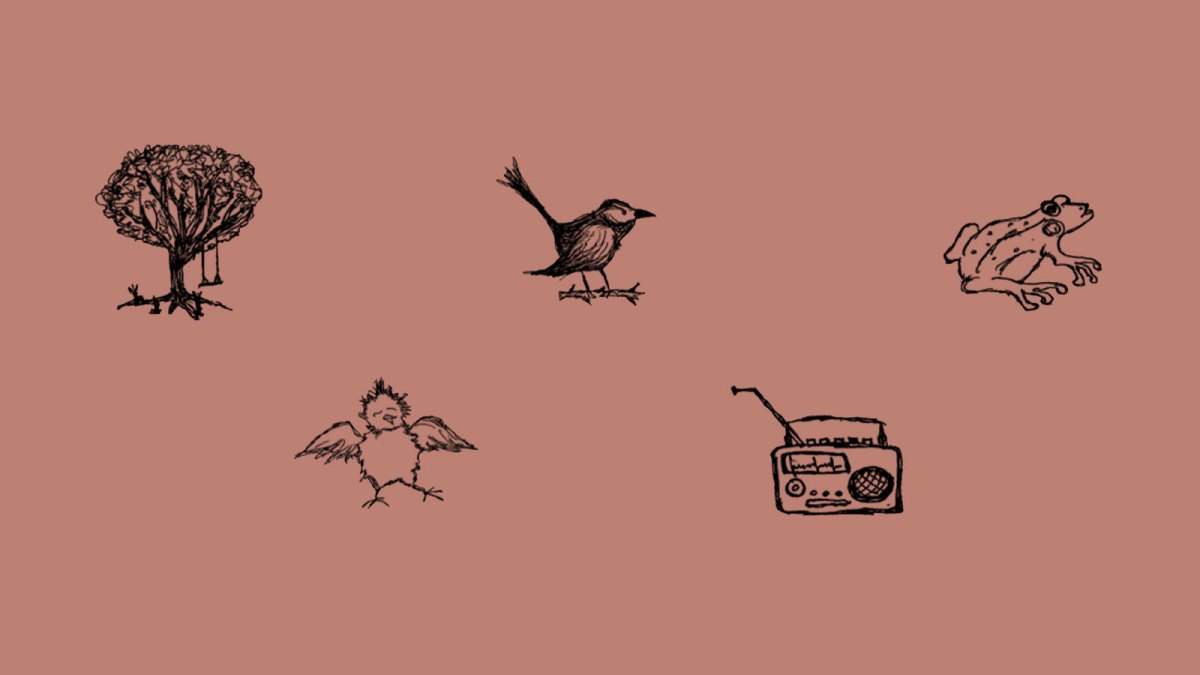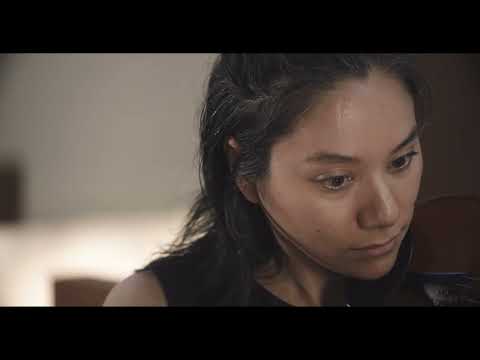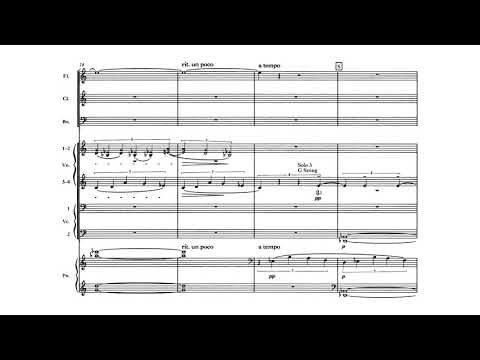In 1930, Ruth Crawford went to Berlin. Nearly a century ago, she was a few years younger than I am now. I imagine a young American woman deeply intrigued (intimidated?) by her European contemporaries and eager to feel “the scene” under her feet. I can relate.
In a 2017 New York Times portrait, William Robin quoted a letter Crawford wrote to her future husband Charles Seeger a few months into her European stay: “I began to write down all my fears and was rather appalled…fear of having nothing to say musically, fear of not being able to say it, fear, fear, a whole web of it.” I smiled in commiseration revisiting this quote: in a fit of anxiety while working on “Country Radio,” which will be programmed in September at Musikfest Berlin, I made a “fear of failure” spreadsheet. This spreadsheet listed nearly every piece I had written in the past decade or so and noted what fears I remember feeling during the composition process. It consisted of a column titled “reason why I thought it was going to be a disaster”; two yes/no columns, “did I make the deadline?” and “was the piece a disaster?”; and last, a column titled “how it turned out,” where I reflected briefly about how it all went down, and about how I feel about the music today. This was an exercise in data collection, a way for me to place my fears about writing this peculiar work for Ensemble Modern in the context of my creative output, and reassure myself that I was going to, in the end, make something with integrity and conviction.
Crawford’s fears led her to abandon dreams of a big orchestral work and compose instead a more intimate feat: the 1931 String Quartet for which she is now most acclaimed. And rightfully so: it is, in my opinion, a tour de force, a world of such concentrated and intense expression that it feels entirely idiosyncratic, both of its time and ahead of it. But what would Crawford’s big orchestral debut have sounded like if she was writing it on commission, and, by necessity, had to work through those fears? If there were a hall, an ensemble, and a premiere in the books, would her fears have been compounded? How would she have confronted them, and what music would have resulted?
“Country Radio” is a piece I never would have imagined writing if not for Ensemble Modern’s particular request. Last November, the group asked if I would create an open instrumentation work for all of the participants in their Young Ensemble Academy to perform alongside members of Ensemble Modern as a sort of “grand finale” to a week of intensive chamber music coachings and performances. The open instrumentation criteria was critical because they did not yet know the make-up of the young ensembles who would enroll. Also, it was clear to me from their description of the week’s activities and pedagogical aims that whatever I wrote needed to be quite sight-readable, or at least suitable to a range of performance levels and backgrounds. I was surprised to be a candidate for this type of project: my music is compulsively detailed and particular to whatever instruments I am writing for. Outside of my comfort zone, the task brought me “fear, fear, a whole web of it.”
Grateful for encouragement from the ensemble, I chose to go towards my fears in pursuit of the knowledge and expression that can be found in new, unfamiliar experiences. I proposed to start with an “etude” by arranging Charles Ives’s 1906 “Central Park in the Dark” for open instrumentation and a structurally malleable score. This working-backwards approach of transforming something fixed (that I love just the way it is!) into something more open and flexible would then teach me how to be more flexible and open in my own music.
“Country Radio” thus emerged as a companion to Ives’s “Central Park in the Dark.” Both will be performed consecutively at Musikfest Berlin. I used the same formal premise: an ostinato layered with different musics emerging from the distance, accumulating, and then receding. Ives’s ostinato is a 10-measure chorale that repeats verbatim throughout. Mine is much longer: a two to three minute chorale (depending on the tempo taken by performers) whose number of repetitions determines the length of the piece. Ives’s musical layers quote tunes from his day and ragtime battles from a bustling New York City night. Mine quote field recordings taken from my home in rural Connecticut and my commute to and from work, where the classical radio station battles with adjacent channels for signal dominance in a delightfully glitchy, manic way. Around my chorale ostinato, the ensemble is divided into groups of duos and trios, each with their own music and accompanying field recording. In addition to these through-composed trios and duos, there are optional “obbligato” improvisatory parts: “chirping obbligato” with the “chicks in the brooder trio” and “croaking obbligato” with the “frog duo,” for example. These sections were written with the intent of allowing maximal participation and saturating the overall soundscape with instrumental sounds that evoke their field recording pairings. Hopefully the aleatoric interweaving of these musical sources with interjecting environmental sounds make it fun to play.
The two works performed together is a sisterly listening experience: the same temporal architecture unfolding in different sonic environments; the same broad scaffolding filled in with the details of completely different lived experiences. Structurally speaking, a lot of music could be talked about in these terms.
It is fitting that for this concert, Charles should be in the mix with me and Ruth. There are personal and aesthetic resonances between the two, and both are hugely influential on my own musical identity. Both Ives and Crawford made a hard break with writing music after bursts of extreme productivity: Crawford stopped composing around 1934, Ives around 1927. Both composers ultimately eschewed the mainstream paths of compositional careers. Political motivations turned Crawford’s attention towards ethnography and motherhood shortly after her year abroad. Ives sold life insurance, but, as Michael Broyles writes, “Political fervor lay behind much of what he did.” Both were deeply passionate about the American vernacular: from the onset of his compositional output, Ives used quotation and citation of hymnals, military marches, and popular song. Crawford abandoned the European modernists she once admired in favor of transcribing and arranging American folk songs for the Library of Congress.
Musically, Ives and Crawford both seem to like thick, oozing harmony, dissonant but never entirely disavowing functional harmonic syntax. Crawford’s 1926 “Music for Small Orchestra” and Ives’s “Central Park in the Dark” both savor what my former teacher, John Heiss, called “the right wrong notes.” (Professor Heiss introduced me to both composers as an undergraduate.) Charles and Ruth both compose knotty counterpoint that deals in independent streams that happen to coexist, rather than being bound to rules of vertical harmonicity. These are lessons I’ve tried to absorb in my own music.
When I was a student just learning about Ives and Crawford, I was writing music when I wanted and was often not sure when a performance would happen. But it has been some time since I’ve composed without a performing ensemble in mind and premiere date scheduled (aside from a song here or there for friends, and, of course, the outpouring of serenades to my cat). All of these projects come with prerequisites and/or conditionals, from practical ones such as instrumentation and duration to more abstract ones like thematic topics, response prompts (visual art, text, other works of music), or programmatic companions. There are artistic, financial, professional, and interpersonal motivations that counterbalance each other in different proportions with every creative opportunity. In short: the circumstances in which I write music are bound by a network of inward and outward goals, influences, responsibilities, and realities that can be difficult to disentangle from what some may call an “essential” or “authentic voice.”
The latest from VAN, delivered straight to your inbox
In sorting out the myriad unfolding of actions contained in the expression of a single musical moment, from the molecular to the societal, the musicologist Benjamin Piekut writes, “Whatever music might be, it clearly relies on many things that are not music, and therefore we should conceive of it as a set of relations among distinct materials and events that have been translated to work together.” I feel this acutely in my own practice: the artistic motivations behind any piece of work branch off into so many more reasons than “I felt x so I wrote y.” Presenting a work to an audience without presenting those “distinct materials and events” as if it were a contained entity feels incomplete, but it is the expectation composers often encounter. The fears noted in the “Country Radio” column of my “fear of failure” spreadsheet that resemble Crawford’s—fear of having nothing to say for an open instrumentation ensemble, fear of not knowing how to say it—are compounded with other considerations: fear of disappointing (any number of parties involved), fear of misreading the ensemble’s intentions, fear of wasting someone else’s time, “fear, fear a whole web of it.”
Considering the network of entangled motivations and the fears they elicit draws questions about the musical works they produce. Does the brilliance of Crawford’s String Quartet come from a creative force untethered to the extra-musical contingencies of a sustainable career in the arts? Does Ives’s lack of an awaiting ensemble free him to create a score that informally notates its complex temporal interplay? Is “Country Radio” less authentic because I never would’ve written a piece like this without such a network?
The “how it all turned out” column of my spreadsheet illuminates that again and again, these fears, however pervasive, did not materialize. Music gets written for all sorts of reasons; it gets experienced in all sorts of ways. It is the working together of infinite relationships into a finite experience that is filtered through many subjective perspectives.
In the late 1940s, after three of her four children were nearly grown, Crawford began composing again. In 1952, after she won a competition with her “Suite for Woodwind Quintet,” Crawford wrote a letter to her friends Carl and Charlotte Ruggles: “I believe I am going to work again — more. If I live to be 99 as my grandfather did, that gives me 48 more years.”
She died the following year from intestinal cancer.
I’ll never know the complex network of motivations that led Crawford to stop composing in 1934. But if her “web” of fears was a factor, I wish she had composed through them. Maybe if she had ensembles and premieres in the books to keep her writing, there would be more to hear in the resurgence of her music today. ¶
Subscribers keep VAN running!
VAN is proud to be an independent classical music magazine thanks to our subscribers. For just over 10 cents a day, you can enjoy unlimited access to over 875 articles in our archives—and get new ones delivered straight to your inbox each week.
Not ready to commit to a full year?
You can test-drive VAN for one month for the price of a coffee.





